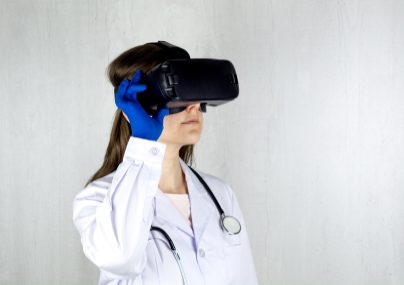 中国已成为全球第二大生物医药市场,也意欲崛起成为医药研发领域的超级大国 。受到2020年新冠疫情冲击,这一领域更将获得长足发展。创新是医药行业得以发展的关键,在法律与监管层面,中国正在为医药创新创造更好的环境。在此背景下,律师与公司法务又扮演着怎样的角色?
中国已成为全球第二大生物医药市场,也意欲崛起成为医药研发领域的超级大国 。受到2020年新冠疫情冲击,这一领域更将获得长足发展。创新是医药行业得以发展的关键,在法律与监管层面,中国正在为医药创新创造更好的环境。在此背景下,律师与公司法务又扮演着怎样的角色?
2020年的新冠疫情将本已处于聚光灯下的中国医疗医药板块再次推向风口浪尖。在实体经济面临衰退的背景下,医疗医药却依旧在研发、资本运作等领域保持活力。它甚至被称为“逆周期投资板块”:宏观经济越不好,大家越觉得健康才是重中之重,越愿意投资这一板块。
过去十年中,医疗医药板块在中国的增长势头不容小觑。根据《自然》杂志(Nature)2019年11月一篇名为“下一个生物科技超级大国”的报道,2018年,中国以1370亿美元销售额,成为了全球第二大生物医药市场。
2016年10月,中共中央国务院曾印发《“健康中国2030”规划纲要》,提出了五个方面的战略任务,其中之一就是发展健康产业。
“《中华人民共和国基本医疗卫生与健康促进法》是我国卫生健康领域内的第一部基础性、综合性法律。其第三条第二款规定‘医疗卫生事业应当坚持公益性原则’,15个字,直接为医疗卫生领域现行的十几部法律定下了原则。从这个角度看,怎么高估这部法律的影响都不为过。”
王波,通商律师事务所
“中国医疗医药市场近十年来经历了爆发式增长,这种增长体现在资本市场领域,就是上市、投融资的异常活跃。”通商律师事务所合伙人王波律师说,“根据第三方统计数据,即便受到2019年资本市场投资整体趋于谨慎的影响,医疗产业投资依旧维持在600亿元人民币。”
在达维律师事务所亚洲(日本除外)联席主管何鲤律师看来,中国的医疗医药领域,长期以来一直是一个特别重要、却没有被完整激活的市场板块。
他指出,在需求方面,一方面中国人口众多、人均寿命不断延长。另一方面,人们的支付能力不断增强,希望享受更好的药品、器械和医疗服务。这些都导致医疗需求激增。但在供给层面,中国医疗领域向来存在不少问题,体现在看病难、医疗服务发展程度低、医药领域研发能力弱等方面。
何律师同样体察到了过去十年中医疗医药领域的飞速发展,而这引发了三方面法律业务的发展。“其一是中国境内与境外合规服务;其二是与医药行业相关的交易类服务,比如并购、投资、知识产权等;其三就是资本市场类服务,例如上市。”他说。
监管变化
医疗医药关乎人们的健康福祉,向来是受到高度监管的行业。然而在中国,该领域的法律监管长期以来并不完善。医疗医药行业的大力发展,也必然要求法律监管环境的进步。
医疗医药服务的本质究竟是盈利,还是关乎公共利益?在中国,由于该领域长期缺乏上位立法,导致监管及服务机构对于医疗服务本质的认识模糊,因此长期存在以药养医、过度治疗等诸多乱象。
王波律师提到,近期,国家强化了对医疗医药领域的顶层立法设计,最重要的即是于2020年6月1日生效的《中华人民共和国基本医疗卫生与健康促进法》。
“这部法律是我国卫生健康领域内的第一部基础性、综合性法律,是这一领域的顶层设计。例如,其第三条第二款规定‘医疗卫生事业应当坚持公益性原则’,15个字,直接为医疗卫生领域现行的十几部法律定下了原则。从这个角度看,怎么高估这部法律的影响都不为过。”
王波律师梳理了最近一两年来较为重要的具体法律和监管变化,在他看来,“国家取消了很多行政审批,转而加强全流程监管;同时,国家也在强化监管、强化市场主体的主体责任,并对违规行为处以重罚。”
在生物医药领域,2019年被称为“中国生物医药行业的政策创新年”,当年8月,《药品管理法》经历了18年来的首次重大修订,新法全面实施了药品上市许可持有人制度(MAH),过去,中国将药品注册与生产许可“捆绑”,导致科研机构只能将新药卖给药厂,以获得药品批文。
在新制度下,科研机构可申请成为药品上市许可持有人,将新药委托给药厂生产,这将促进他们的创新积极性。同时,许可持有人也要对药品/医疗器械的质量在其整个生命周期内承担主要责任。
在罗氏制药中国法务合规部负责人刘筠看来,新《药品管理法》提出的MAH制度和药品生命周期全程管理概念允许持有人采取更灵活的经营模式,也会承担更严格的管理责任,这是“我们非常支持的理念”。
她同时指出,新法及其配套《新药品注册管理办法》较大程度简化并加快了生物制药,尤其是创新药的审评审批。同时,国家药监局发布了大批有关生物制药技术审评指导原则,也使其研发和上市标准更为清晰成熟,促进了该领域的国际化进程。
不过,“目前有不少细则还有待澄清落地。我们期待未来有更多标准、细则及指南出台,给予企业更清晰的指引”,她说。
在刘筠看来,中国医药领域监管的频繁变化为法务工作提出了新要求。首先是企业对合规需求的强化。“医药行业是被高度监管的行业,无论研发、生产还是商业模式,对于行业监管法规的理解及合规管理都是基础”。
其次,法务需要学会对动态环境中的商业机遇具备敏锐嗅觉,并对业务提供有效支持。“中国的法规环境日新月异,在变化中及时发现机遇、顺势而为是企业重要的竞争力之一。”
近期,罗氏中国法务团队就在与外部律所共同进行新MAH制度下与本地企业合作的可行性研究,如研发合作、生产外包等。
监管变化之外,自2019年8月,中国启动了医保目录动态调整,并开启国家“带量采购”,在中国,老百姓看病依旧主要选用医保报销范畴内的服务与药物,这必将对医药企业产生重大影响。
在刘筠看来,医保目录的调整意味着更多机遇。“更多优秀的生物制药产品得以进入国家医保目录,使中国患者能及时受益于人类医学进步的成果。”她说。
然而在王波律师看来, “企业追求经济利益,而医保的深化改革是从保障全国人民的基本医疗角度追求资金使用效率的最大化。医保局牵头的谈判会砍掉药企的高毛利……随着改革深化,药品和医疗企业也注定会在相关医保改革浪潮中经受挑战”。
创新与合作
根据前述《自然》杂志报道,中国的医药研发也处于快速发展之中,第一波自主研发新药的浪潮已在中国掀起,据中国医药创新促进会统计,中国本土医药公司数量已达4441家。
近年来,中国本土医药公司纷纷加大研发领域投入。然而根据世界卫生组织的数字,中国具备研发能力的药企仍占少数,且他们投资研发的预算仅占销售收入的不到5%。与之相比,西方生物科技企业通常会将近一半的销售收入投入到研发之中。这意味着中国医药领域研发仍处于萌芽状态。
何鲤律师也以自己的观察回应了这一状况。他曾参与十数家中国医疗医药企业在美国及香港的IPO,在撰写招股书的过程中,律师需要深入了解每家医药企业所针对的疾病领域,以及药物机理,他发现,“相当多生物制药上市企业,针对的还是业已被国外先进药企业证明过的药物靶点,或者采取了me-better(仿创结合)的研发途径,仍不是百分百的自我创新。我们期待看到中国研发实力的不断增长。”
在自主研发外,同步发展的还有从境外引入药物品种,而跨境许可交易也是一种特殊的研发形式。某位要求匿名的中国医药企业法务告诉ALB,他们近年来不仅观察到了药品合作在增加,开展国际临床多中心临床研究的药物比重和投入也在逐年加大。
而此类合作得以频繁开展的背景,在于中国政府对外商来华投资愈发开放的态度,新《外商投资法》的颁布便是例证。2019年,上海市政府曾在《上海市新一轮服务业扩大开放若干措施》中提到,要推进医疗科技领域的项目合作和取消外资准入限制,争取允许外商投资人体干细胞、基因诊断与治疗技术开发和应用。
达维律师事务所全球合伙人褚洋律师告诉ALB,从律所角度,他们近期也观察到了此类以合作为导向的交易或咨询的增长。“一个趋势是生物科技公司寻求继续扩展药物研究管线,律所会代表此类公司寻求和国外药企的合作,获取某些药物在中国的开发权利,提高企业药物管线的丰富度。”他说。
当然,合作从来都是双方向的,面对中国日益发展的医药医疗市场,外国药企也加快了进驻脚步。“(我们观察到的)另一个趋势是外国药企在中国寻找合作伙伴,设立合资公司,把药物在大中华地区的开发权利许可给合资公司,该合资公司甚至继而寻求在香港上市。”褚律师说。
作为最早进驻中国市场的药企之一,罗氏早在1994年就在上海设立了合资企业。2019年10月,罗氏在上海的创新中心落成,创新中心拥有约150名科研人员,从事药物发现和早期临床开发工作。
刘筠观察到,近年来中国医药市场的竞争确实更激烈了。“我们关注到随着生物科技的发展与应用,近年来中国涌现出大量本地生物科技及医药公司。”
不过在她看来,这种变化利大于弊,“众多本地投资和研发者的加入,会推动科技进步、人才交流,也为我们带来更多商业合作机会……跨国外企与中国本土企业并不应是零和游戏的竞争关系,在医药领域尤其如此。”
挑战与趋势
谈到医药企业未来在中国面临的挑战,刘筠首先提到,在知识产权层面,中国尚未建立起药品注册与专利状态的链接制度,“这容易造成产品上市后厂家之间大量的知识产权侵权争议和纠纷,无论对原研还是仿制企业都是巨大的风险和成本,同时也不利于保护创新……目前《专利法》正在修订之中,我们对此将保持高度关注。”
另一项挑战隐藏在对药企来说至关重要的医疗数据领域。“数据是产品研发的生命线。对于生物制药行业,产品的科学性、安全性、有效性都取决于规范可靠的临床数据和真实世界数据。”刘筠说。
一方面,当下大数据的开发和利用为生物制药企业打开了新的创新之路,另一方面,由于医疗健康数据牵涉个人隐私、科研归属、乃至国家安全,是十分敏感也被高度监管的领域。
“目前国内对于医疗健康数据的管理并无统一法规和监管部门,相关规定散落在《民法》《刑法》《网络安全法》《人类遗传资源管理办法》,以及即将出台的《生物安全法》中,更新也非常频繁。生物制药企业如何保持敏锐,有效利用医疗健康数据推动研发惠及患者,同时确保遵守不断更新的法律法规要求,是非常重要的话题。”
刘筠,罗氏制药
“目前国内对于医疗健康数据的管理并无统一法规和监管部门,相关规定散落在《民法》《刑法》《网络安全法》《人类遗传资源管理办法》,以及即将出台的《生物安全法》中,更新也非常频繁。生物制药企业如何保持敏锐,有效利用医疗健康数据推动研发惠及患者,同时确保遵守不断更新的法律法规要求,是非常重要的话题。”刘筠说。
药企面临的再一项新变化,即对“互联网+”业务模式的探索,目前,罗氏法务团队已经与外部律所就远程诊疗、处方药网上销售开放后与互联网诊疗机构的战略合作等展开研究。
受访律师们纷纷表示,虽然“互联网医疗”并非新概念,涉及范围也十分宽泛,但此次新冠疫情确实促发了该领域的爆炸式增长。王波律师和ALB分享了部分数据:今年3月,国家卫生健康委曾公布,其管辖医院的互联网问诊咨询比去年同期增加了17倍,一些第三方互联网服务平台的问诊咨询量则比同期增长了20多倍。
疫情下,无法出门的老百姓切实感受到了互联网问诊、买药等服务的可行性与便利性,“互联网医疗公司可能会因此产生更多流量,为日后上市奠定了基础。”褚律师说。
不过他也指出,“然而这类公司普遍也在从事电商类服务……怎么把互联网医疗业务打造成为独立的盈利产品,可能还需进一步探讨。”
何鲤律师也说:“我觉得互联网医疗的时代还没有真正到来……然而它已经具备了一定的软硬件基础,例如5G、大数据,人工智能等。”
医疗医药行业互联网业务模式的发展也会对律师带来挑战。王波律师说:“律师需要对行业有更深入的了解,有更快速的学习能力,同时还要拥有较强的类型化区分能力。”
他举了个例子:提到互联网,很多律师第一反应是要办《增值电信业务经营许可证》,但对于“互联网+医疗”而言,网上挂号、在线问诊、网络医院是属于此类许可下的“B21-在线数据处理与交易处理业务”,还是“B25-信息服务业务”,或均不属于?这就要求律师对相关业务有深入了解,进行类型化区分后才能做出相关分析判断。
何律师则指出,互联网医疗还面临合规问题,“从诊疗、建立电子处方,到交易、配送,除了医疗方面的合规问题外,也触及隐私、数据等合规问题。”
谈到医疗医药领域未来的整体发展,何律师说,虽然该板块当下热度不低,但无论医药、医疗器械还是医疗服务,其在中国的成熟度和市场渗透率还远远有待提高,“它们都还处于黎明时期”。
Health in Focus
China has become the world's second largest biopharmaceutical market and is on the way to becoming the next superpower in the pharmaceutical R&D field. Innovation is key to the development of the pharmaceutical industry, and China is creating a more conducive environment for such innovation at the legal and regulatory level. We look at the role that lawyers and in-house counsels are playing in this.
The COVID-19 outbreak in 2020 has brought the Chinese medical and pharmaceutical sector into the spotlight again. In the context of the recession facing the broader economy, the medical and pharmaceutical industry still maintains vitality in terms of research and development and capital operation. It is even called the "sector of counter-cycle investment,” meaning, the worse the macro economy, the more people become aware that health is the top priority, and therefore are more willing to invest in this sector.
During the past decade, the medical and pharmaceutical sector in China has seen a growth momentum that cannot be ignored. According to a report in Nature magazine in November 2019, titled “The Next Biotech Superpower,” China is the world's second-largest biopharmaceutical market with $137 billion in sales in 2018.
“The Law of the People's Republic of China on Promotion of Basic Medical and Health Care is the top-level legislation design in the field. For example, paragraph 2 of Article 3 stipulates that 'medical and health care services shall adhere to the principle of public welfare,’ setting forth the principle for the dozen or so prevailing laws in the medical and health care sectors."
Wang Bo, Commerce & Finance Law Offices
In October 2016, the China's CPC Central Committee and the State Council issued the Healthy China 2030 Planning Outline, which proposed five strategic tasks, with one of them being to develop the healthcare industry.
"The Chinese medical and pharmaceutical market has experienced an explosive growth in the past decade. This growth is manifested in the capital market – the relevant listing, investment and financing activities have been extremely active," says Wang Bo, partner at Commerce & Finance Law Offices. "According to a third-party's statistical data, although the overall capital market investment tended to be cautious in 2019, investments in the medical industry remained at 60 billion yuan [$8.6 billion]."
In the view of He Li, Asian co-head of Davis Polk & Wardwell, the Chinese medical and pharmaceutical sector has long been a particularly important market segment that has not been fully activated.
He Li points to the rapid development of the medical and pharmaceutical sector in the past decade, which has brought about the development of legal business in three aspects. "One is compliance services in China and abroad; the second is pharmaceutical products related transaction services, such as mergers and acquisitions, and investment; and the third is capital market services, such as listing," he says.
REGULATORY CHANGES
The medical and pharmaceutical industry is closely related to people's health and wellbeing, and as a result has always been a highly regulated industry globally. But in China, the medical and pharmaceutical regulatory systems have not always kept up with the rapid development of the industry.
According to Wang, China has been stepping up efforts to strengthen the top-level legislation in the medical and pharmaceutical sector, among which, the most important legislation is the Law of the People's Republic of China on Promotion of Basic Medical and Health Care, which came into force on June 1 this year.
"This law is the top-level legislation design in the field. For example, paragraph 2 of Article 3 stipulates that 'medical and health care services shall adhere to the principle of public welfare,’ setting forth the principle for the dozen or so prevailing laws in the medical and health care sectors," Wang says.
In the field of biotech, 2019 was also known as "the year of policy innovation.” In August 2019, the first major revision was done to the Drug Administration Law since its promulgation 18 years ago. The revised law implements a new market authorization holder (MAH) system. In the past, drug registration is bundled together with drug production license; as a result, scientific research institutions have to sell newly developed drugs to pharmaceutical production companies in order to obtain drug registration approvals.
Under the new system, scientific research institutions can apply to become drug marketing license holders and entrust pharmaceutical production companies with the production of these new drugs, which is a great incentive to scientific research institutions for innovation.
According to Amy Liu, head of legal & compliance division at Roche Pharmaceuticals China, the MAH system, as well as the concept of full-process management of the drug life cycle, allow drug marketing license holders to adopt a more flexible business model and meanwhile undertake more and stricter management responsibilities.
She also points out that the new Drug Administration Law and the newly revised Measures for the Administration of Drug Registrations greatly simplified and accelerated the review and approval of biopharmaceuticals, especially innovative drugs. At the same time, the National Medical Products Administration (NMPA) has released a number of guidelines for biopharmaceutical technology review, making its R&D and marketing standards clearer and more mature, and thus promoting the internationalization process in this field.
But "there are still many detailed implementing rules need to be clarified. We look forward to the promulgation of more standards, detailed rules and guidelines in the future to give companies clearer guidance," she says.
Meanwhile, Liu points out that the frequent changes to China's pharmaceutical regulations have posed new requirements for lawyers. The first is the higher compliance requirements for companies.
Secondly, in-house counsel need to have a keen sense of business opportunities in a dynamic environment, so as to provide effective support for the business. "China's regulatory environment keeps evolving; therefore, it is one of the important competitiveness of a company if it is able to discover opportunities in time and act according to circumstances," she says.
Recently, Roche China's legal team worked together with law firms to conduct feasibility studies on the cooperation with local companies under the new MAH system, to carry out R&D cooperation, outsourced production and more.
In addition to regulatory changes, China also started the dynamic adjustment of the medical insurance catalogue in August 2019 and launched the national program of "buying with quantity.” In China, people still choose medical care services and drugs within the scope of medical insurance reimbursement, therefore the new adjustment will have a significant impact on pharmaceutical companies.
INNOVATION AND COLLABORATION
According to the report in Nature, China's pharmaceutical R&D landscape is also undergoing rapid development. The first wave of independent research and development of new drugs has been launched in China. According to the data released by the China Pharmaceutical Innovation and Research Development Association, the number of Chinese local pharmaceutical companies has reached 4,441.
In recent years, Chinese biotech companies have increased investment in research and development. But according to data released by the World Health Organization, there are not many pharmaceutical companies with R&D capabilities in China and their R&D budget accounts for less than 5 percent of their sales revenue. In contrast, biotech companies in the U.S. and Europe invest nearly half of their sales revenue on R&D. This means that research and development in China's pharmaceutical sector is still in its infancy.
He Li has participated in the IPOs of dozens of Chinese pharmaceutical companies in the United States and Hong Kong. In the process of preparing the prospectus of such a company, he finds that "a considerable number of biopharmaceutical companies intended to be listed are still targeting drug targets that have been proven by foreign advanced pharmaceutical companies, or adopt a 'me-better' R&D approach, which is not pure local innovation."
In addition to independent research and development, the cross-border licensing transaction is another form of research and development, the volume of which is also increasing in recent years. An in-house counsel from a local pharmaceutical company, who wants to stay anonymous, tells ALB that not only do cross-border drug licensing transactions occur more frequently in recent years, but also the proportion and investment in drugs for clinical researches among multiple international clinical centers are increasing year by year.
All these benefit from the increasingly open attitude of the Chinese government towards foreign investment in China, which is manifested in the promulgation of the new Foreign Investment Law. Local governments are also opening doors to overseas players in this field.
Chu Yang, partner at Davis Polk & Wardwell, tells ALB that from the perspective of a law firm, it had already seen an increase in such cooperation-oriented transactions or consultation requests. "One of the tendencies is that biotech companies seek to continue to expand drug research pipelines, while law firms represent these companies in seeking cooperation with foreign pharmaceutical companies to obtain the right to develop certain drugs in China and increase the varieties of the companies' pharmaceutical products pipelines,” he notes.
Of course, cooperation is always a two-way road. "Another trend that we have noticed is that foreign pharmaceutical companies are looking for partners in China to set up joint ventures, so as to authorize these joint ventures to develop pharmaceutical products in Greater China. Then these joint ventures may seek to list in Hong Kong," Chu says.
As one of the first pharmaceutical companies entering the Chinese market, Roche established a joint venture in Shanghai as early as 1994. In October 2019, Roche's new innovation center in Shanghai was inaugurated, which hired about 150 scientific researchers engaged in drug discovery and early clinical development.
Liu observes that competition in the Chinese pharmaceutical market has indeed become more intense in recent years. In her opinion, the benefits of this change outweigh the disadvantages. "With the participation of many local investors and R&D institutions, it will promote the technological progress and talent exchange ... And it should not be a zero-sum game between multinational companies and Chinese local companies, especially in the pharmaceutical field," she says.
CHALLENGES AND FUTURE TRENDS
Speaking of the challenges faced by pharmaceutical companies in China in the future, Liu firstly mentions that, in terms of intellectual property rights, China has not yet established a link system between drug registration and patent status. "It might easily cause a large number of IP infringement disputes among manufacturers after the products are marketed," she feels.
"At present, there are not unified regulations and regulatory authorities for the management of medical care data in China, and relevant laws are updated quite frequently. Therefore, it is very important for biopharmaceutical companies to effectively use medical and health data to promote R&D to benefit patients, and meanwhile to keep abreast of the changes in the relevant laws and regulations to ensure compliance in their operations."
Amy Liu, Roche Pharmaceuticals China
Another challenge lies in the field of medical care data, which is critical for pharmaceutical companies.
"At present, there are not unified regulations and regulatory authorities for the management of medical care data in China, and relevant laws are updated quite frequently. Therefore, it is very important for biopharmaceutical companies to effectively use medical and health data to promote R&D to benefit patients, and meanwhile to keep abreast of the changes in the relevant laws and regulations to ensure compliance in their operations," Liu says.
Another new change facing pharmaceutical companies is the Internet plus business model. At present, the Roche's legal team is working with law firms on issues related to the strategic cooperation with online medical institutions after the uptake of services such as remote medical consultation, and online sales of prescription drugs.
Lawyers say that although the "Internet-based health care" is not a brand-new idea, the COVID-19 pandemic has triggered a boom in the field. According to data released by the National Health Commission, in March, virtual consultations conducted by hospitals under its administration increased 17 times over the same period last year, while virtual consultations conducted through some third-party online service platforms saw an increase of more than 20 times compared with the same period last year, Wang shares with ALB.
The development of the Internet-based business model in the medical and pharmaceutical industry also pose challenges to lawyers. According to Wang, "lawyers need to have a deeper understanding of the industry, have a faster learning ability, and also have a strong ability to appropriately classify the services and products."
He gives an example. When talking about the Internet, the first thing comes into the minds of many lawyers is that the Permit for Operation of Value-Added Telecom Services must be obtained. But when it comes to online medical appointments, online consultations, and online hospitals, whether they fall within the category "B21 – online data processing and transaction processing business" or the category "B25 – information service business", or neither? It requires lawyers to have a deeper understanding of the related business and make relevant analysis and judgment after putting the services or products into different categories appropriately.
Regarding the overall development of the medical and pharmaceutical sector in the future, He Li says that the sector is pretty much a hot spot at present, but the market maturity and market penetration in terms of medicines, medical devices or medical care services in China still need to be improved. "This sector is still at the stage of dawn."
To contact the editorial team, please email ALBEditor@thomsonreuters.com.


